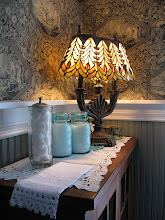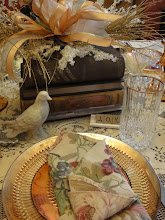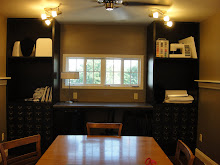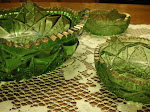Mid September 2018, a beautiful hand crank sewing machine arrived from Milton Kenyes Buckinghamshire England. All the metal bits were quite dirty, and the mechanics dry.
Cleaned, oiled and gleaming . . .
You can't miss the proud and popular brand name Frister and Rossmann with Bronze Lilies decals. It is a Transverse Shuttle. The boat shuttle and inserted bobbin removed from the machine during cleaning and oiling.
There was a rust line centered around the dirty hand wheel. Using 0000 steel wool and Blue Diamond polish the rust line dissolved along with the dirt. Fun to see the shine come through-- buffing it with small strips of soft microfiber cloth.
Before cleaning and oiling
After cleaning and oiling
There is a nickel plated thumb screw located on the bed, in front of the stitch length slide adjuster and serial number. Removing that thumb screw allowed me to lift the front of the machine upwards and backwards to clean the mechanics underneath.
You can see how very dirty the machine arrived. The sticky film of dirt and old oil wasn't easy to remove. From the start, the hand wheel was rotating stiffly and ever so slightly catching at 7 o'clock and 11 o'clock. So, I was very interested in cleaning and oiling all the moving parts underneath the machine.
These are the seller's photos from the Ebay.co.uk auction (pink background). You can see how very dirty the machine arrived to me. The sticky film of dirt and old oil wasn't easy to remove and is a slow process.
Now then, I'm inserting "after photos" showing progress of cleaning . . .
But first, I will publish this post--to permanently save what I've completed so far. You see, I am having a problem with the site. Previously I was typing along and then everything vanished twice.
Ok. Let's continue with the "after photos" . . .
Dirty presser foot, thumb screw, throat plate
It is no secret Frister and Rossmann and other sewing machine manufacturers copied the very popular and petite Singer Model 12 Family Sewing Machine. They advertised the Frister and Rossmann as the Silent Cam Action Improved Lockstitch, and in sometimes went on to claim it was the Improved Singer 12. Cheeky, as Sr. Sewalot puts it.
Clues to dating this machine: Serial Number 1302239 suggests a manufacturer's date around 1910.
Frister and Rossmann featured the Trade-Mark Berlin center medallion until WWI. After the war started British sewing machine dealers (agents) quietly removed the Trade-Mark Berlin, but ontinued to sell them. Eventually Vickers and Jones were the preferred brands.
I cleaned the wood base with a bit of Howard's Feed N Wax (beeswax and orange oil).
"Before Cleaning the Bobbin Winder and the Hand Wheel"
I cleaned the wood base with a bit of Howard's Feed N Wax (beeswax and orange oil).
"Before polishing the hand wheel"
I have a special (safe) surface cleaning product called Zymol, and its companion polishing paste purchased from The Featherweight Shop. It is expensive, but it is absolutely excellent.
Threaded boat shuttle.
"Before polishing"--I spent a lot of time deep cleaning the mechanics.
Note: mid-way on the pillar is a thumb screw. Removing the thumb screw opens up the boomerang shaped Frister & Rossmann panel, to clean and oil inside the machine.
Guess what? I haven't tested stitches yet. I'd like to give it a week, and with the new oil crank it a few minutes each day. I'll oil it again, and afterwards adjust tension and do some test stitches.
This is a great machine, in sound condition. Very proud to add this Frister & Rossmann Bronze Lilies to my herd. I confess, I am addicted to sewing machines and have no shame.
Thank you for visiting me. I have more machines to show you.
And . . .
I will be posting mid-October 2018 about our
Halloween Weekend Victorian House Tour and Craft Show
Sat/Sun Oct 27-28 from 10 until 5
at my home: 255 Mill St. - Scandinavia, WI
$2 per person admission at the door goes directly to The Humane Society of Waupaca County.
Come in for a Spell. Handmade everything: To-Die-For Chocolates, Loomed Rugs, Sterling Silver and Gemstone Jewelry, Fresh Bakery and Treats, Pickles and Jellies, Soaps, Lotions and Balms, Vintage Pattern Aprons, Queen Quilts and Fancy Beaded Wool Purses.
Lunch in the Red Garage by Scandinavia Library Group
Plenty of Parking
I make fresh cookies every morning so you'll have a treat while you browse our Craft Show.
We have about 600 visitors each year!














































































.jpg)















